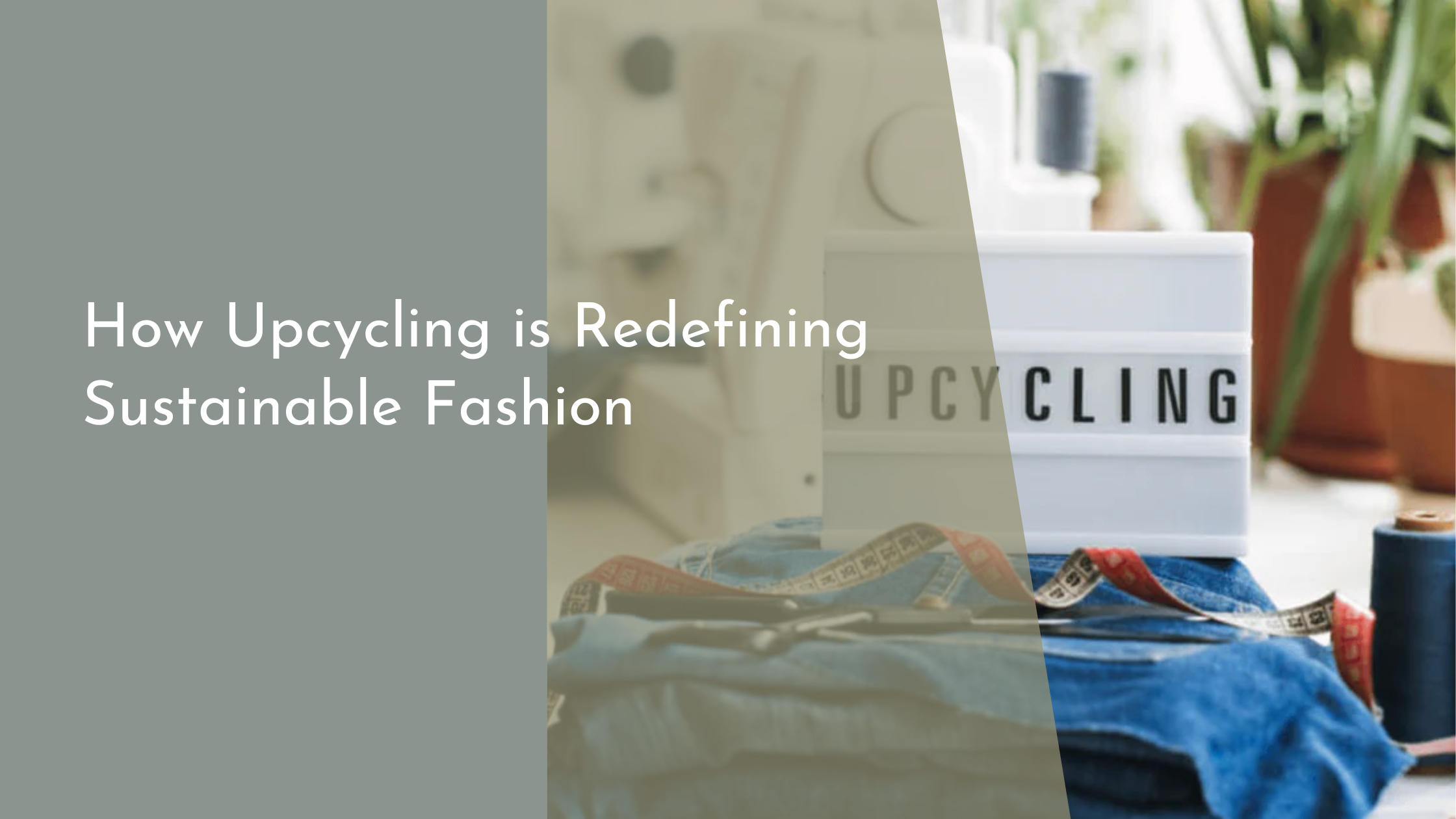How Upcycling is Redefining Sustainable Fashion
In recent years, the fashion industry has seen a significant shift towards sustainability, driven by growing environmental concerns and a demand for more ethical production processes. At the heart of this movement is the concept of upcycling—a creative and innovative approach to transforming waste materials into new fashion pieces. This process not only breathes new life into old items but also offers a unique and personalized touch to fashion, making it a favorite among eco-conscious consumers. Let’s delve into how upcycling is redefining sustainable fashion and paving the way for a greener future.
The Rise of Upcycling in the Fashion Industry
In an era where fast fashion dominates the market, the sheer volume of discarded clothing has become a pressing environmental issue. The rise of upcycling in the fashion industry addresses this problem head-on by turning waste into fashion statements. Unlike recycling, which often involves breaking down materials, upcycling enhances the value of existing items through creative reinvention. Designers and brands are increasingly embracing this practice, not only for its environmental benefits but also for its potential to offer unique, one-of-a-kind garments that stand out in a sea of mass-produced clothing.
Pioneers of sustainable fashion are leading the charge by incorporating upcycled pieces into their collections, setting a trend that is quickly gaining traction. Fashion weeks around the world now showcase collections that feature upcycled designs, highlighting their aesthetic appeal and sustainable credentials. Consumers, too, are becoming more aware of the impact their purchasing decisions have on the environment, and they are seeking brands that align with their values. This shift in consumer behavior is encouraging more designers to explore upcycling, making it a vital component of the sustainable fashion movement.
Creative Techniques Transforming Old to New
Upcycling offers a canvas for creativity, where designers transform old garments into fashion-forward pieces using a variety of innovative techniques. Patchwork, for example, combines fabric scraps into intricate designs, creating unique textures and patterns. This technique not only adds visual interest but also allows for the use of smaller pieces of fabric that might otherwise go to waste. Similarly, embroidery and embellishments can rejuvenate basic garments, turning them into statement pieces with just a few strategic stitches or additions.
Beyond textiles, upcycling extends to accessories and footwear, where repurposing materials like leather from old jackets or tires into durable and stylish products is gaining popularity. Designers are experimenting with dyeing techniques, like natural dyeing, which utilizes plant-based colors to refresh faded garments without the use of harsh chemicals. These creative techniques not only add an artistic flair but also highlight the potential for endless reinvention within the world of upcycled fashion, proving that sustainability doesn’t have to come at the cost of style.
Environmental Benefits of Upcycled Fashion
One of the most significant environmental benefits of upcycled fashion is its ability to reduce waste. By repurposing existing materials, upcycling diverts textiles from landfills, decreasing the volume of waste and the demand for new resources. This process conserves energy and water that would otherwise be used in the production of new clothing, significantly lowering the carbon footprint of the fashion industry. Furthermore, by extending the life of a garment, upcycling curbs the cycle of fast fashion, encouraging consumers to invest in timeless, high-quality pieces.
Another key environmental advantage is the reduction of pollution associated with traditional garment production. The fashion industry is notorious for its use of toxic dyes and chemicals, which can contaminate water sources and harm ecosystems. Upcycled fashion, with its emphasis on natural and low-impact processes, offers a cleaner alternative. By minimizing the need for new materials and reducing dependency on chemical treatments, upcycling presents a sustainable solution to some of the industry’s most pressing environmental challenges.
The Future of Fashion: Embracing Upcycling
As awareness of environmental and social issues within the fashion industry grows, the future of fashion is increasingly pointing towards sustainable practices like upcycling. This shift is being driven by a new generation of designers and consumers who prioritize ethical production and environmental responsibility. Upcycling provides a platform for fashion innovation, allowing designers to experiment with sustainable materials and techniques while pushing the boundaries of creativity. The result is a diverse range of fashion options that cater to different tastes and preferences, making sustainable fashion accessible to a broader audience.
The integration of upcycling into mainstream fashion signals a hopeful future where sustainability and style coexist harmoniously. Emerging technologies and collaborations between designers, brands, and consumers promise to further enhance the potential of upcycled fashion. As this movement continues to gain momentum, it has the power to redefine industry standards, influence consumer behavior, and ultimately lead to a more sustainable and responsible fashion ecosystem.
Upcycling is more than just a trend; it’s a revolutionary approach to fashion that merges sustainability with creativity. As designers continue to push the boundaries of what’s possible with repurposed materials, and as consumers increasingly demand ethical and eco-friendly options, upcycling is poised to become a cornerstone of sustainable fashion. Embracing this innovative practice not only helps to mitigate the environmental impact of the fashion industry but also offers a fresh and exciting way to express personal style. In a world where sustainability is becoming a necessity, upcycled fashion offers a promising path forward, transforming the way we view and wear our clothes.

